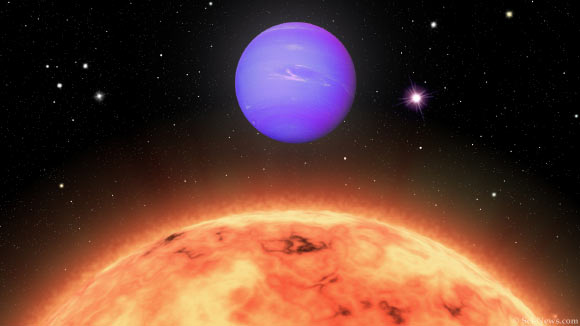Using NASA’s Transiting Exoplanet Survey Satellite (TESS) and two ground-based instruments, astronomers have discovered and confirmed a transiting hot Neptune exoplanet orbiting TOI-824, a K4-type dwarf star located 210 light-years away in the constellation of Circinus.
Source: Sci News
“There are a number of striking planet populations that emerge when studying the period and radius measurements that TESS and its predecessor Kepler have compiled for over 2,000 confirmed, transiting exoplanets they detected,” lead author Dr. Jennifer Burt of NASA’s Jet Propulsion Laboratory and her colleagues wrote in their paper.
“One of the most surprising is the huge population of planets between the size of Earth and Neptune that orbit stars of all stellar types, a population that is missing from our own Solar System.”
“Equally interesting and enigmatic are the hot Jupiters that orbit their stars with periods thousands of times shorter than our own Jupiter and the small, tightly packed planets around dwarf stars.”
“At the same time, this sizeable dataset reveals the lack of planets within certain regions,” they noted.
“One notable example is the existence of the ‘hot Neptune desert,’ or the lack of planets the size and mass of Neptune on periods shorter than 4 days. The origin of these hot Neptunes remains unclear.”
The newly-discovered planet, dubbed TOI-824b, appears to lie at the lower edge of this Neptunian desert.
The alien world has a radius of 2.9 times that of the Earth, a mass of 18.5 Earth masses, and orbital period of 1.39 days.
“The planet’s mean density is 4.03 g/cm3, making it more than twice as dense as Neptune,” the astronomers wrote.
They detected TOI-824b in data from TESS and then confirmed its existence using the Planet Finder Spectrograph (PFS) and the High Accuracy Radial velocity Planet Searcher (HARPS) spectrograph.
“TOI-824b’s high equilibrium temperature (980 degrees Celsius, or 1,796 degrees Fahrenheit) makes the planet likely to have a cloud free atmosphere, and thus an excellent candidate for follow up atmospheric studies,” they wrote.
“The detectability of its atmosphere from both ground and space is promising and could lead to the detailed characterization of the most irradiated, small planet at the edge of the hot Neptune desert that has retained its atmosphere to date.”
The team’s paper will be published in the Astronomical Journal.
Source: Sci News

































Leave a Comment
You must be logged in to post a comment.